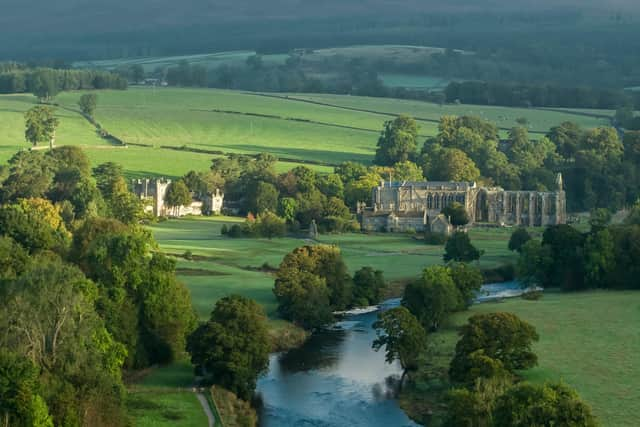Bolton Priory: The historic Yorkshire abbey which is a riverside haven of beauty
The most visited of all Yorkshire’s medieval religious houses thanks to its picturesque location on the edge of the Leeds-Bradford conurbation, Bolton Priory (Bolton Abbey is the name of the adjacent hamlet) was established by a group of Augustinian canons in 1154. Unlike other orders, they led a semi-monastic life and supplied priests to local parish churches.
The community had been founded 34 years earlier at Embsay, five miles away, with support from wealthy benefactors William de Romille and his wife Cecily. However, in 1151 their daughter Alice swapped her estate in Wharfedale for the Augustinian site at Embsay and so began the construction of the priory dedicated to St Cuthbert.
Advertisement
Hide AdAdvertisement
Hide AdThe chancel is thought to occupy the site of a Saxon chapel. There were cloisters, other domestic buildings, and an octagonal chapter-house, but it took around 100 years to complete the full nave and transept. A central tower is thought to have collapsed in the 14th century. While part of the building accommodated the priory’s chapel another section was used as a parish church.


Records show that the beautiful location overlooking a bend in the River Wharfe was not the haven of peace and quiet contemplation the canons had sought. Between 1316 and 1320 frequent incursions into England by Scots raiders are thought to have wreaked havoc.
The priory was small compared to Yorkshire’s other well known religious settlements and was never finished. In 1520, Prior Moone, the final prior at Bolton, commissioned the building of a western tower, but its height had reached only that of the nave by the time the priory closed in 1539 during Henry VIII’s Dissolution of the Monasteries. Plans show it would have been three times as high. Alexander Hamilton Thompson, a 20th century professor of medieval history at Leeds University, wrote that had the tower been completed “it would have had few parallels in England”.
Restoration of the church began in the late 18th century while the priory ruins became a famous beauty spot, sketched by the artist J.M.W. Turner and visited by William Wordsworth and Charlotte Brontë.
Comment Guidelines
National World encourages reader discussion on our stories. User feedback, insights and back-and-forth exchanges add a rich layer of context to reporting. Please review our Community Guidelines before commenting.